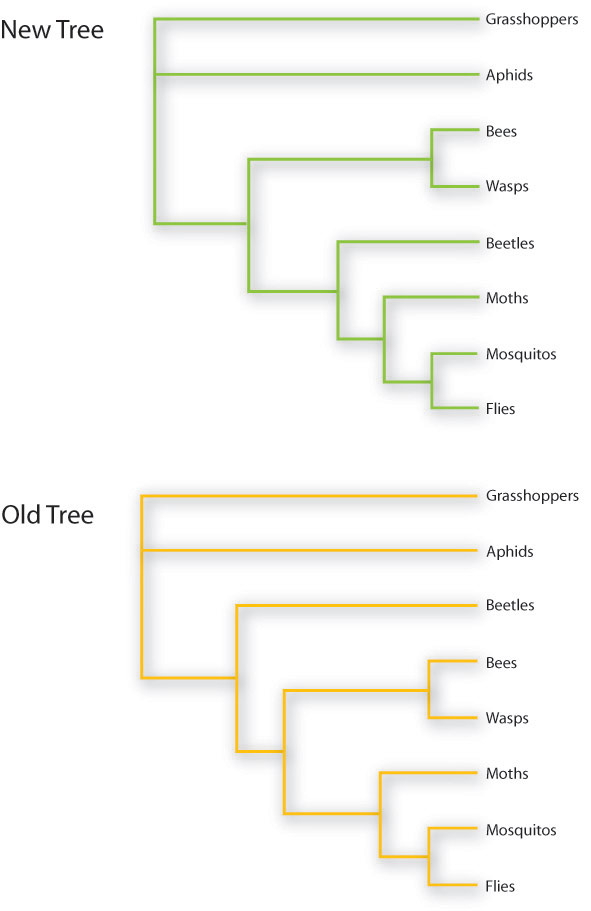From rxpgnews.com
New genetic analysis forces re-draw of insect family tree
By University of Bath
Oct 29, 2006, 22:26
The family tree covering almost half the animal species on the planet has been re-drawn following a genetic analysis which has revealed new relationships between four major groups of insects.
Scientists have found that flies and moths are most closely related to beetles and more distantly related to bees and wasps, contrary to previous theory.
The results are based on an analysis of the same 185 genes found in the genomes of eight different insect families, which together represent 45 per cent of all known animal species.
This enabled the international group of scientists to work out the evolutionary relationships between the insects based on changes and mutations within those genes.
Previously scientists had assumed that flies and moths were most closely related to bees and wasps, with beetles more distantly related to these groups.
This new family arrangement also brings the different species of social insects, such as termites and bees, closer together - suggesting that the ability of insects to cooperate in social groupings may have evolved just once, rather than independently in several different species.
�About half of all animal species belong to just four groups of insects but, surprisingly, we never knew for sure how they are related to each other,� said Dr Martin Lercher from the University of Bath, who lead the research.
�While there was never unequivocal evidence for it, scientists believed for a long time that, based on morphology, flies and moths were most closely related to bees, with beetles more distantly related to these three groups.
�By comparing genetic information from 185 genes that were sequenced in species from all of these groups, we found that in fact flies and moths are most closely related to beetles, and more distantly related to bees.
�This sheds new light on a large number of evolutionary questions, as a correct understanding of the evolutionary relationships is fundamental to any interpretation of similarities or differences among species.
�For example, social colonies are common among bees and wasps and their relatives, ants, as well as among more distantly related insects, such as termites and aphids.
�That beetles don't show this tendency, known as eusociality, has been interpreted as a sign that eusociality has evolved several times independently.
�Now that we know that bees, wasps and ants are in fact the closest relatives to the more distantly related (or �basal�) species, it appears more likely that the genetic basis for eusociality may have evolved only once, and was lost in the common ancestor of beetles, moths, and flies.�
The researchers used the genomes of six different insects from the holometabolous group of insects (insects which undergo complete metamorphosis): fruit fly (Drosophila melanogaster), mosquito (Anopheles gambiae), silk moth (Bombyx mori), flour beetle (Tribolium castaneum), honey bee (Apis mellifera) and sibling parasitic wasp species (Nasonia vitripennis and Nasonia giraulti).
These insects represent the four major orders of holometabolous insects, beetles (Coleoptera), moths (Lepidoptera), flies (Diptera) and bees and wasps (Hymenoptera), which together represent 45 per cent of the animal species on earth.
They also included one orthopteran (the grasshopper Locusta migratoria) and one hemipteran (the pea aphid Acyrthosiphon pisum), both of which are uncontested out-groups to the holometabolous insects.
 |
All rights reserved by www.rxpgnews.com
